 Last additions - Otsu 大津市 Last additions - Otsu 大津市 |

The Gongen-zukuri architectural style is employed. This shrine was the inspiration for the more famous Toshogu Shrine in Nikko (Tochigi) and Kunozan Shrine in Nihondaira, Shizuoka.Jul 07, 2009
|
|

Yomiya-joJul 07, 2009
|
|

Jul 07, 2009
|
|

Jul 07, 2009
|
|

Jul 07, 2009
|
|

Jul 07, 2009
|
|

Hiyoshi Taisha's Romon Gate at Nishi Hongu Shrine is an Important Cultural Property. 楼門Jul 07, 2009
|
|

Jul 07, 2009
|
|

Inside portable shrine storehouse where retired portable shrines are kept. They are Important Cultural Properties.Jul 07, 2009
|
|

Jul 07, 2009
|
|

Near Nishi Hongu is this small river and restaurant.Jul 07, 2009
|
|

Path to Higashi Hongu Shrine.Jul 07, 2009
|
|
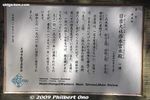
About Nishi Hongu Honden HallJul 07, 2009
|
|

Jul 07, 2009
|
|

This is a must-see shrine. Very ornate and colorful, similar to Toshogu Shrine in Nikko. Important Cultural Property.Jul 07, 2009
|
|

Jul 07, 2009
|
|

Rear of Higashi Hongu Honden Hall. You can see that the veranda in the center is slightly elevated. This makes it different from Nishi Hongu.Jul 07, 2009
|
|
|

Jul 07, 2009
|
|

Nishi Hongu Honden Hall worships the god (Onamuchi-no-kami) protecting the nation. This current structure was built in 1586. 西本宮 本殿Jul 07, 2009
|
|

Jul 07, 2009
|
|

Jul 07, 2009
|
|

Jul 07, 2009
|
|
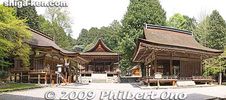
In the middle is the Haiden for Higashi Hongu.Jul 07, 2009
|
|

Romon Gate rearJul 07, 2009
|
|

Shirayama-gu Shrine HaidenJul 07, 2009
|
|

Jul 07, 2009
|
|

Jul 07, 2009
|
|

Omiya Bridge happens to be an Important Cultural Property. 大宮橋Jul 07, 2009
|
|

Jul 07, 2009
|
|

Jul 07, 2009
|
|

Entering Nishi Hongu Shrine.Jul 07, 2009
|
|

The gate gives a hint of what's to come.Jul 07, 2009
|
|

Way to Hiyoshi Toshogu, in the same direction as the Hieizan cable car.Jul 07, 2009
|
|

Nishi Hongu Haiden HallJul 07, 2009
|
|

Jul 07, 2009
|
|

Jul 07, 2009
|
|

Jul 07, 2009
|
|

Directly behind the Haiden is the Nishi Hongu Honden HallJul 07, 2009
|
|

Jul 07, 2009
|
|

Jul 07, 2009
|
|

Sanno Torii has a unique shape. The triangular gable on top represents the integration of Buddhism's Womb Realm and Diamond Realm with Shinto. 山王鳥居Jul 07, 2009
|
|

About the Romon Gate in Japanese.Jul 07, 2009
|
|

Jul 07, 2009
|
|

Right side of Higashi Hongu Honden. The front looks almost identical to Nishi Hongu.Jul 07, 2009
|
|

Jul 07, 2009
|
|

Portable shrines (called shinyo instead of mikoshi) are placed in the Haiden for the Sanno-sai Festival.Jul 07, 2009
|
|

Jul 07, 2009
|
|

Jul 07, 2009
|
|

Ninomiya Bridge leading to Higashi Hongu Shrine. 二宮橋Jul 07, 2009
|
|

Jul 07, 2009
|
|
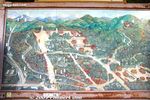
Map of Hiyoshi Taisha Shrine at the foot of Mt. Hiei. It is a complex of the so-called Seven Sanno Shrines, including two shrines designated as National Treasures. There are also 14 lesser shrines. Most things are within easy walking distance.Jul 07, 2009
|
|

Jizo statueJul 07, 2009
|
|

Jul 07, 2009
|
|

Another torii on the Sando road leading to Hiyoshi Taisha. This neighborhood is called Sakamoto which is noted for traditional architecture.Jul 07, 2009
|
|

Jizo 早尾地蔵尊Jul 07, 2009
|
|

Torii at night in autumn. Hiyoshi literally means "Good Day" or "Fortunate Day." People pray here to have a good day. Having a good day every day leads to a good life. Taisha means "grand shrine."Jul 07, 2009
|
|

The first torii you see when you enter the sprawling shrine grounds. Hiyoshi Taisha worships the mountain god of Mt. Hiei and the god protecting the nation. MAPJul 07, 2009
|
|

Hiyoshi Taisha Shrine at the foot of Mt. Hie in Otsu, Shiga Prefecture is the head shrine for all Hiyoshi, Hie, and Sanno Shrines in Japan (around 2,000). Hiezan Sakamoto Station on the JR Kosei Line and Keihan Line's Sakamoto Station are nearest.Jul 07, 2009
|
|

Torii at Hiyoshi Taisha Shrine. Two of the shrine's main structures are National Treasures.Jul 07, 2009
|
|

Hiyoshi Taisha's tea field, Japan's oldest.During the latter half of November, Hiyoshi Taisha has 3,000 maple trees lit up at night 5:00 pm–8:30 pm. Even the green leaves look great against the dark sky. Info in Japanese:
http://hiyoshitaisha.jp/event/momiji/Jul 07, 2009
|
|

The Enryakuji shuttle bus runs every day between the cable car station, Toto, Saito, and Yokawa during March 21 to Nov. 30 from 10 am to 4:30 pm. They don't run that often so check the bus times.May 22, 2009
|
|

May 22, 2009
|
|

Statue of Nichiren at Joko-in temple.May 22, 2009
|
|

May 22, 2009
|
|

Cable car back down to Sakamoto.May 22, 2009
|
|
|

May 22, 2009
|
|

Monk with a nice car. May 22, 2009
|
|

Cable car back down to Sakamoto.May 22, 2009
|
|

BenzaitenMay 22, 2009
|
|

May 22, 2009
|
|

Joko-in temple.May 22, 2009
|
|

Path to Joko-in temple.May 22, 2009
|
|

Thank you for coming to worship. From here, I caught a shuttle bus back to the Enryakuji cable car station.May 22, 2009
|
|

About Eshin-do temple May 22, 2009
|
|

Joko-in temple.May 22, 2009
|
|

May 22, 2009
|
|

Statue of Nichiren at Joko-in temple.May 22, 2009
|
|

May 22, 2009
|
|

Gyo-in training hall (not open to the public).May 22, 2009
|
|

May 22, 2009
|
|

Ganzan Daishi-do HallMay 22, 2009
|
|
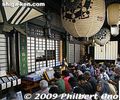
Inside Ganzan Daishi-do HallMay 22, 2009
|
|
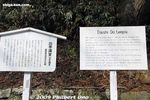
About Ganzan Daishi-do HallMay 22, 2009
|
|

About Sekizan-gu Shrine May 22, 2009
|
|

Ganzan Daishi-do HallMay 22, 2009
|
|

May 22, 2009
|
|

Gate to Ganzan Daishi-do HallMay 22, 2009
|
|

GraveMay 22, 2009
|
|

Eshin-do temple May 22, 2009
|
|

May 22, 2009
|
|

Shoro Bell tower May 22, 2009
|
|

Sekizan-gu Shrine May 22, 2009
|
|

May 22, 2009
|
|

May 22, 2009
|
|

May 22, 2009
|
|

Bell tower May 22, 2009
|
|

Yokawa Chudo Hall balconyMay 22, 2009
|
|

Inside Yokawa Chudo HallMay 22, 2009
|
|

About Yokawa Chudo Hall.May 22, 2009
|
|

May 22, 2009
|
|

Altar inside Yokawa Chudo HallMay 22, 2009
|
|

Altar inside Yokawa Chudo HallMay 22, 2009
|
|

Stilts of Yokawa Chudo Hall, the main hall in Yokawa.May 22, 2009
|
|

Yokawa Chudo Hall in Enryakuji, Mt Hiei, Otsu, Shiga. May 22, 2009
|
|

Inside Yokawa Chudo Hall are numerous little Buddha statues.May 22, 2009
|
|

Yokawa Chudo HallMay 22, 2009
|
|

May 22, 2009
|
|

Konpon Nyoho-to pagodaMay 22, 2009
|
|

May 22, 2009
|
|

There are these small Buddha statues all over Yokawa.May 22, 2009
|
|

Tatsugaike Pond and Benzaiten shrineMay 22, 2009
|
|

May 22, 2009
|
|

May 22, 2009
|
|

May 22, 2009
|
|

About St. Shinran at Enryakuji.May 22, 2009
|
|

About St. ShinranMay 22, 2009
|
|

Konpon Nyoho-to pagodaMay 22, 2009
|
|

The entrance pathway has picture panels explaining about the famous founders of Japanese Buddhist sects.May 22, 2009
|
|

Path to Ruri-do, the only building that was not torched by Oda Nobunaga in the 16th century. Unfortunately, it was too far for me to reach.May 22, 2009
|
|

Map of YokawaMay 22, 2009
|
|

Shuttle buses run between all three temple complexes. I took the shuttle bus from Saito to Yokawa which was too far away to walk.May 22, 2009
|
|

View during the bus ride.May 22, 2009
|
|

Gate to Yokawa temple complex in Enryakuji.May 22, 2009
|
|

Site where St. Honen trained at Enryakuji. Right next to Shaka-do.May 22, 2009
|
|

Buddha's giant footprints.May 22, 2009
|
|

About Shaka-do HallMay 22, 2009
|
|

Buddha's giant footprints.May 22, 2009
|
|

May 22, 2009
|
|

Shaka-do Hall altarMay 22, 2009
|
|

May 22, 2009
|
|

People chanting in front of Shaka-do Hall. They are ordinary folk undergoing a training program.May 22, 2009
|
|

Shaka-do Hall, EnryakujiMay 22, 2009
|
|

Inside Shaka-do HallMay 22, 2009
|
|

People chanting in front of Shaka-do Hall.May 22, 2009
|
|

Shaka-do HallMay 22, 2009
|
|

About Ninai-do.May 22, 2009
|
|

Steps to Shaka-do Hall, the main hall in Saito.May 22, 2009
|
|

On the right is Hokke-do Hall.May 22, 2009
|
|

On the left is Jogyo-do Hall.May 22, 2009
|
|

Site where Saint Shinsei trained at Enryakuji.May 22, 2009
|
|

Minobuchi Benzaiten shrineMay 22, 2009
|
|

Site where Saint Shinran trained at Enryakuji.May 22, 2009
|
|

Ninai-do Hall consists of two halls connected by a corridor.May 22, 2009
|
|

May 22, 2009
|
|

Tsubaki-do Hall.May 22, 2009
|
|

May 22, 2009
|
|

Entrance gate to Saito from the parking lot.May 22, 2009
|
|

Jodo-in templeMay 22, 2009
|
|

May 22, 2009
|
|

About Jodo-in templeMay 22, 2009
|
|

May 22, 2009
|
|

May 22, 2009
|
|

Cross a short bridge to Sanno-in temple.May 22, 2009
|
|

Jodo-in templeMay 22, 2009
|
|

May 22, 2009
|
|
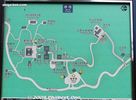
Map of Saito complex in Enryakuji.May 22, 2009
|
|

Soothing sounds of water, etc., can be heard. Almost Zen-like.May 22, 2009
|
|

It was some distance to walk, but all downhill.May 22, 2009
|
|

May 22, 2009
|
|

Sanno-in temple in Saito temple complex of Enryakuji.May 22, 2009
|
|

May 22, 2009
|
|

Inside Amida-do Hall.May 22, 2009
|
|

Door of Amida-do HallMay 22, 2009
|
|

Amida-do Hall altarMay 22, 2009
|
|

Now I walked from Todo to the Saito temple complex.May 22, 2009
|
|

Soundscape garden in front of Amida-do Hall.May 22, 2009
|
|

How the pagoda was reconstructed.May 22, 2009
|
|

About Amida-do Hall.May 22, 2009
|
|

Amida-do HallMay 22, 2009
|
|
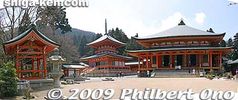
Hokke Soji-in Toto pagoda on the left and the Amida-do Hall on the right. Enryakuji temple, Mt. Hiei, Otsu, Shiga.May 22, 2009
|
|

This Hokke Soji-in Toto pagoda was rebuilt by the Sagawa Kyubin courier service and other donations in Oct. 1980. The original structure was torched in the 16th century.May 22, 2009
|
|

Another nice building to photograph is this Hokke Soji-in Toto pagoda.May 22, 2009
|
|

May 22, 2009
|
|

Inside the pagoda.May 22, 2009
|
|

About Kaidan-in templeMay 22, 2009
|
|

Picture panels telling the stories of Saicho and other founders.May 22, 2009
|
|

Kokuho-den is a museum of temple treasures. This is next to the parking lot. Admission charged, in addition to the Enryakuji admission fee.May 22, 2009
|
|

May 22, 2009
|
|

Photo of the altar inside through a narrow slit.May 22, 2009
|
|

Kaidan-in templeMay 22, 2009
|
|

Steps to Kaidan-in templeMay 22, 2009
|
|

May 22, 2009
|
|

Daikodo HallMay 22, 2009
|
|

About Daikodo Hall.May 22, 2009
|
|

May 22, 2009
|
|

Daikodo HallMay 22, 2009
|
|

Inside Daikodo Hall are portraits and sculptures of founders of Japanese Buddhist sects. Honen, Shinran, Nichiren, etc. 大講堂May 22, 2009
|
|

Daikodo Hall 大講堂May 22, 2009
|
|

Offer 50 yen to ring the bell.May 22, 2009
|
|

Honen and ShinranMay 22, 2009
|
|

May 22, 2009
|
|

May 22, 2009
|
|

Shoro bell tower 鐘楼May 22, 2009
|
|

Monjuro altar with Manjusri bodhisattva (Monju bosatsu).May 22, 2009
|
|

Monjuro Tower May 22, 2009
|
|

Monjuro tower houses a statue of the Manjusri bodhisattva (Monju bosatsu). It looks like a gate, but it's not.May 22, 2009
|
|

May 22, 2009
|
|

Inside Monjuro is an altar.May 22, 2009
|
|

May 22, 2009
|
|

Inside MonjuroMay 22, 2009
|
|

Steps to Monjuro Gate which faces the Konpon Chudo.May 22, 2009
|
|

About Kompon Chudo (in English, Hangul, and Chinese). Enryakuji has multi-lingual signs explaining the important buildings.May 22, 2009
|
|

Miyazawa Kenji poem monumentMay 22, 2009
|
|
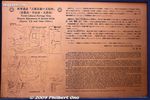
World Heritage Site plaqueMay 22, 2009
|
|

Enryakuji has numerous monuments.May 22, 2009
|
|

Roof corner of Konpon Chudo Hall, a National Treasure.May 22, 2009
|
|

The inner courtyard of Konpon Chudo Hall. Unfortunately, we are not allowed to photograph inside the hall which has three lanterns with an eternal flame.May 22, 2009
|
|

Kompon Chudo templeMay 22, 2009
|
|

MonksMay 22, 2009
|
|

May 22, 2009
|
|

May 22, 2009
|
|

Entrance to Konpon Chudo Hall. Note that since 2016, the Konpon Chudo Hall is undergoing a 10-year renovation project. You may see scaffolding and certain parts might be closed to visitors.May 22, 2009
|
|

Where you take off your shoes to enter Konpon Chudo Hall.May 22, 2009
|
|

Slope going down to Konpon Chudo HallMay 22, 2009
|
|

May 22, 2009
|
|

Konpon Chudo Hall has corridors.May 22, 2009
|
|

May 22, 2009
|
|

Approaching Konpon Chudo Hall or temple. Note that the Konpon Chudo (National Treasure), is undergoing a major renovations until 2025. Parts of it might be covered or closed to visitors. TMay 22, 2009
|
|

Inside Daikokudo HallMay 22, 2009
|
|

Konpon Chudo Hall is a National Treasure and Enryakuji's main worship hall and largest building. It enshrines Yakushi Nyorai, the buddha of healing and health. 根本中堂May 22, 2009
|
|

Way to Kompon Chudo Hall.May 22, 2009
|
|

Daikokudo HallMay 22, 2009
|
|

Manpai-do HallMay 22, 2009
|
|

Model of Mt. Hiei and Enryakuji.May 22, 2009
|
|

Inside Manpai-do HallMay 22, 2009
|
|

If you go by bus, this is the entrance to Enryakuji from the parking lot.May 22, 2009
|
|
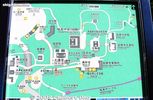
Map of Enryakuji's Todo complex.May 22, 2009
|
|

Entrance to Enryakuji's Todo complex. Admission charged.May 22, 2009
|
|

Cable Enryakuji Station. This is the original Cable Enryakuji Station building that was used when the cable railway between Sakamoto and Mt. Hiei opened in 1927.It was Japan's longest cable car route (2025 meters) at the time. The first floor is the station, while the 2nd floor used to be a VIP room. The 2nd floor is now an exhibition hall and open to the public.May 22, 2009
|
|

View of Lake Biwa and Otsu from Enryakuji Station.May 22, 2009
|
|
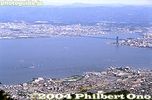
View of Lake Biwa and Otsu. Omi Ohashi Bridge in the background. The towering building is Otsu Prince Hotel.May 22, 2009
|
|

Inside 2nd floor of Enryakuji Station.May 22, 2009
|
|
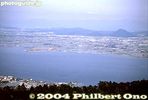
View of Lake Biwa and Otsu from Enryakuji Station. The conical Mt. Mikami in Yasu can be seen on the right.May 22, 2009
|
|

Horaioka has a small cave where stone buddhas are stored. Said to have been made for the many people who died on Mt. Hiei during the feudal period.May 22, 2009
|
|

May 22, 2009
|
|

View from cable car.May 22, 2009
|
|

Enryakuji StationMay 22, 2009
|
|

May 22, 2009
|
|

Cable carMay 22, 2009
|
|

Sakamoto-Enryakuji Cable CarMay 22, 2009
|
|

Midway is this station called Horaioka.May 22, 2009
|
|

Further right of Saito is the third complex called Yokawa (横川). The three complexes are connected to each other by a road and walking path. It is possible to visit all three complexes in one day.Enryakuji is also part of a World Heritage Site called Historic Monuments of Ancient Kyoto.May 22, 2009
|
|

Cable car station in Sakamoto for Enryakuji. The ride is only 8 min. Japan Railways sells a set of discount tickets for the roundtrip cable car ride, Enryakuji admission, and shuttle bus pass. May 22, 2009
|
|

Inside the cable car station building. Enryakuji is also accessible from the other side of the mountain, on the Kyoto side via the Eizan Cable Car.May 22, 2009
|
|

Cable car leaving Sakamoto.May 22, 2009
|
|

On the foot of Mt. Hie on the Shiga side is the temple town of Sakamoto. From here, take the cable car up to Enryakuji. Also accessible from Kyoto and by bus/car via the Hie-zan Driveway. Near JR Hiezan Sakamoto Station/Keihan Sakamoto Station.May 22, 2009
|
|

Headquarters of the Tendai Buddhist sect, Enryakuji is a large complex of temples, halls, buildings, and monuments on Mt. Hiei in Otsu, Shiga Prefecture. It boasts buildings which are National Treasures. MAPMay 22, 2009
|
|

Enryakuji has three temple complexes. The main and largest one is called Todo (Toto 東塔) seen on the left on this map. On the right is the Saito temple complex. The summit has a tourist attraction called Garden Museum Hiei which is not part of Enryakuj東塔, 西塔, 横川May 22, 2009
|
|

May 12, 2009
|
|

May 12, 2009
|
|
| 2449 files on 10 page(s) |
 |
 |
5 |  |
 |
|